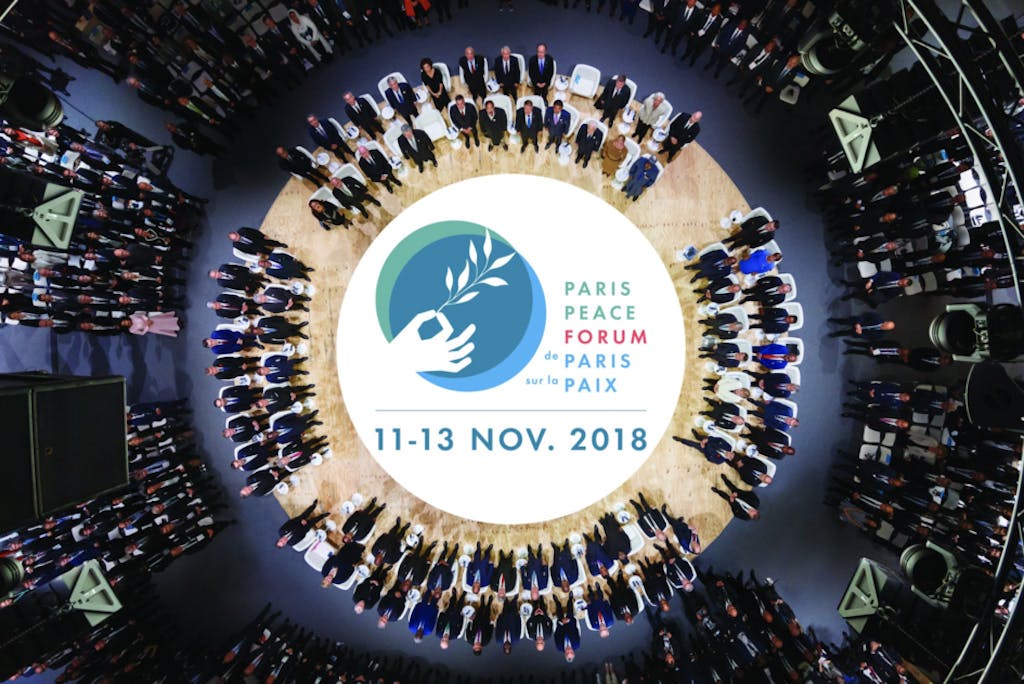It’s no secret that the Sustainable Development Goals (SDGs) can’t be achieved by any one nation or organization. Partnerships are at the heart of the SDGs.
SDG 17 itself recognizes that the success of the agenda will be impossible without strong collaboration among governments, the private sector, philanthropy, and civil society. As part of the United Nations Secretary-General’s focus on modernizing the UN to better deliver on the SDGs and the Paris Climate Agreement, the role of partnerships is as vital as ever. Across the UN and around the globe, innovations for working together are emerging. This will be critical to keep our foot on the pedal. Fortunately, 2018 saw a strengthening and deepening of efforts.
Here are some notable trends and highlights:
The Private Sector is Engaged More Than Ever
2018 made it clear that the private sector plays an increasingly muscular role in helping drive SDG progress. In his annual letter, BlackRock CEO Larry Fink urged business leaders to embrace long-term thinking and the broader impacts of their work on society. Vodafone released its 2019 Global Trends Barometer, which found that 83% of the over 1,700 businesses surveyed believe that acting in an ethical, purpose-driven manner generates more revenue. And a report from the UN Global Compact and Accenture found that 85% of business leaders they surveyed believe that cross-sector partnerships are critical to enabling businesses to help achieve the SDGs.
A number of important initiatives continued to make impressive progress – and new ones emerged:
- The Food and Land Use Coalition made significant gains, with almost 15 partners across the public and private sectors working with over 20 countries to develop roadmaps to sustainable use food and land.
- Bloomberg’s inaugural New Economy Forum brought together more than 400 public and private sector leaders from 60 countries to address critical issues facing the global economy and explore ways to mobilize private sector-led solutions, including through the launch of a new Solutions Lab that will convene 70 partners to drive forward actionable outcomes over the next year.
And companies expressed renewed interest in better understanding how to measure and report on their SDG performance:
- A new guide from the Global Reporting Initiative, UN Global Compact, and Principles for Responsible Investment will be an important resource in helping companies in their efforts.
- The World Benchmarking Alliance, launched this year, now includes 80 partner organizations – from institutional investors, to civil society organizations, to business platforms and academic institutions – and will help advance the important need for public and accessible data and accountability for the private sector in driving impacts toward the SDGs.
Working Together for SDG Financing
Over the last year, several new financial partnerships accelerated private capital with one big goal in mind: closing the $2.5 trillion investment gap for the SDGs.
A steady drumbeat throughout the year, spanning the G7 Summit in June and the G20 Summit in November, continued as investors called for world leaders to raise their sustainability and climate action ambitions. An important focus emerged on the role that blended finance can play for the least developed countries.
And in September, UN Secretary-General Antonio Guterres released a strategy for financing the 2030 agenda, which called for increased private capital flows toward sustainable development and new partnerships to fill the investment gap.
These developments have been grounded in complementary efforts by groups like the Global Impact Investing Network and Impact Management Project, who have been working in collaboration with other actors to develop principles, metrics, and tools to better quantify and measure impact for investors and show the alignment between purpose, profits, and sustainability.
Local Actors Commit to the SDGs
2018 also saw the rise of local action toward the SDGs. July’s High-Level Political Forum (HLPF), the UN’s annual moment to check in on SDG progress, dedicated a full day session to hearing from local leaders from across the globe. New York City became the first city in the world to submit a Voluntary Local Review (VLR), highlighting progress at the city level toward the SDGs.
Several other cities, including Los Angeles and Bristol, have committed to submitting VLRs at next year’s HLPF, and groups like the Brookings Institution and Sustainable Development Solutions Networks’ USA Sustainable Cities Initiative are building on this movement to encourage further action on the SDGs at the regional and local levels, including through cooperation between cities. The resolution adopted during the U.S. Conference of Mayor’s meeting this summer is another encouraging example of cities committing to advance the SDGs.
Widening the Tent
Beyond the private sector, investor community, and local leaders, 2018 saw a number of different players coming together to support the UN and the SDGs:
- This year’s Global Goals Week brought together over 40 partners and featured over 50 events focused on achieving the SDGs and ensuring that no one is left behind.
- In the philanthropic sector, more than 80 leaders from Canada, Mexico, and the United States met at the inaugural North American Community Foundation Summit in February, where they pledged to work to reduce poverty and increase opportunity to achieve the SDGs.
- The Rockefeller Foundation launched Co-Impact, a global collaborative for systems-level change that brings together philanthropic partners, including Bill and Melinda Gates and Jeff Skoll, to explore innovative solutions to creating impact and driving progress.
- The inaugural Paris Peace Forum brought together more than 10,000 people to explore solutions and advance actionable outcomes, including 119 featured projects, related to international peace, security, cooperation, and global governance.
- And youth took an important seat at the table with the launch of Youth2030, the UN Secretary-General’s Youth Strategy in September, aimed at promoting empowerment, inclusion, and agency for the world’s 1.8 billion young people.

Recognizing Linkages
Importantly, this year also illuminated the linkages and connectedness of various challenges we face around realizing the SDGs. From climate change to hunger to pandemics and more, it’s increasingly clear that progress on the SDGs will depend on multi-stakeholder partnerships that address solutions in holistic and cross-cutting ways.
On climate alone, the year featured a number of important examples of climate action partnerships, including the Global Climate Action Summit, hosted by California Governor Jerry Brown, which saw more than 500 commitments, coalitions, and partnerships to accelerate climate action, contribute to increased resilience and decarbonization of the global economy, and achieve the Paris Agreement on Climate Change and the SDGs.
And on the issue of technology, the UN Secretary-General’s launch of the High-Level Panel on Digital Cooperation aims to strengthen partnerships and cooperation in the digital space and contribute to ensuring a safe and inclusive digital future for all. This effort will complement existing partnerships aimed at leveraging data and technology for inclusive, sustainable development.
Looking Ahead to 2019
While 2018 was an important year to reaffirm commitments to partnership, implement new solutions, and drive increased action on the SDGs, current levels of ambition are not enough to meet our 2030 deadline.
We all need to do more, better, and faster to increase the scale and pace of our progress:
- In the private sector, we need more companies to start walking the talk, embracing the SDGs as part of their core business strategies, and committing to driving sustainability at all levels of their value chains.
- We need more cities and community actors to embrace the SDGs and commit to driving local action and impact on shared global goals.
- We need the philanthropic sector to come together as a community and double down on efforts to better measure assess where their dollars are flowing in relation to the SDGs and what impact those dollars are having.
- And we need civil society and individual citizens to demand a seat at the table and push for increased efforts on accelerating SDG progress.
2019 will be another important year for SDG partnerships as we work toward key moments, including a Climate Summit hosted by the UN Secretary-General, a High-Level Dialogue on Financing hosted by the UN General Assembly, the G7 and G20 Summits, and the first Heads of State convening at the UN to review SDG progress during the annual High-level Political Forum.
Four years into the SDGs, we can’t afford to sit by and rely on business as usual to accomplish our goals. Let’s step up action strategically – in collaboration and with clear objectives – to ensure that the world we deserve by 2030 is a reality.




 View All Blog Posts
View All Blog Posts
